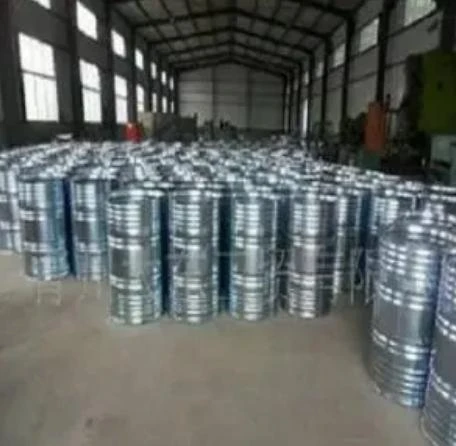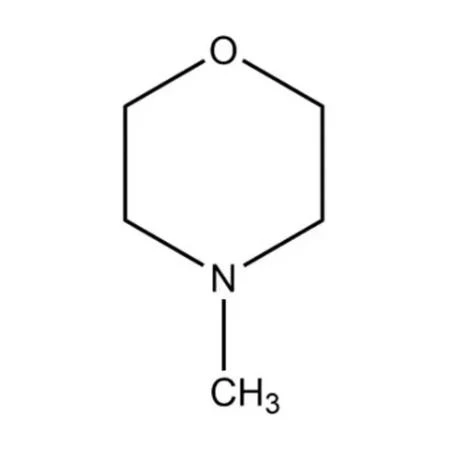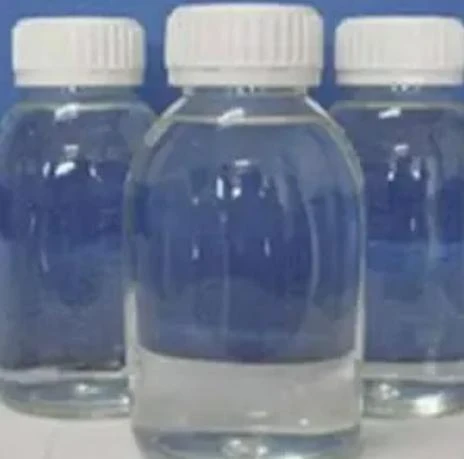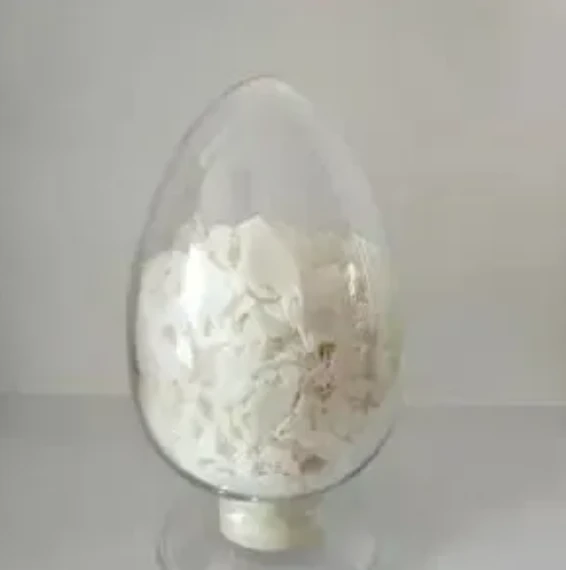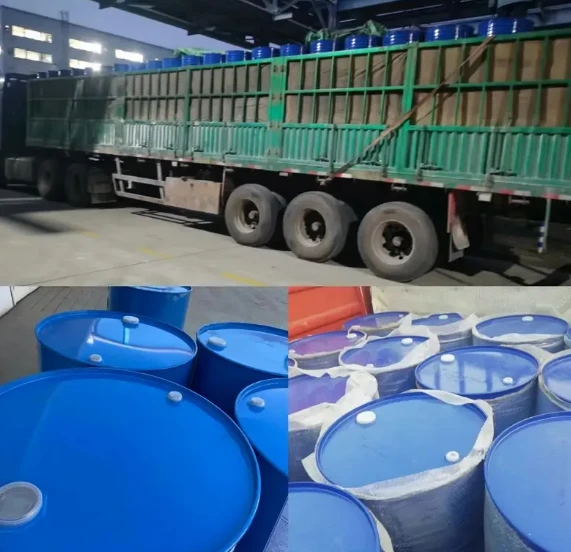Phenyl Dichlorophosphate: Applications in Organic Synthesis and Phosphorylation Reactions
苯基二氯磷酸酯 (C₆H₅OPOCl₂) is a halogenated organophosphate compound of significant industrial and academic interest. Its structure features a dichlorophosphate group (–OPOCl₂) attached to a phenyl ring, combining the electrophilic reactivity of phosphorus with the aromatic stability of benzene. The compound typically exists as a colorless to pale brown liquid, with commercial grades achieving ≥99.0% purity. Minor discoloration may arise from trace impurities, though this does not significantly impact its reactivity.
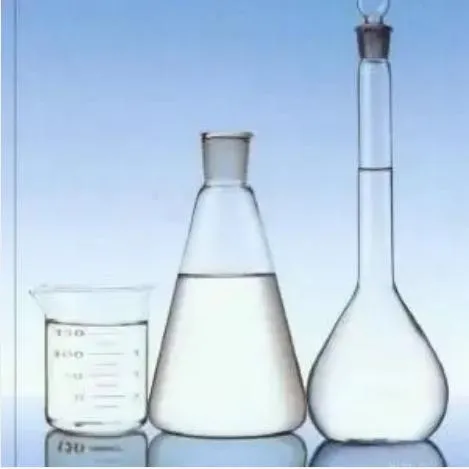
苯基二氯磷酸酯: Chemical Profile and Reactivity
The phosphorus atom in 苯基二氯磷酸酯 exhibits a trigonal bipyramidal geometry, with two chlorine atoms occupying axial positions. This configuration enhances its susceptibility to nucleophilic substitution, particularly at the chlorine sites. The phenyl group stabilizes the molecule through resonance effects, reducing unwanted side reactions during phosphorylation. However, as an organophosphate, it remains sensitive to reducing agents (e.g., hydrides), which can produce toxic phosphine gas (PH₃). Partial oxidation by strong oxidizers may release phosphorus oxides (POₓ), necessitating stringent handling protocols.
In organic synthesis, 苯基二氯磷酸酯 serves as a bridge between inorganic phosphate chemistry and organic substrates. Its dual functionality allows it to act as a phosphorylating agent or a precursor to more complex phosphoesters. For instance, in nucleotide chemistry, it facilitates the controlled introduction of phosphate groups without over-functionalizing sensitive biomolecules.
The Role of Dichlorophosphate in Phosphorylation Reactions
这 dichlorophosphate moiety (–OPOCl₂) is the linchpin of 苯基二氯磷酸酯’s utility. This group’s high electrophilicity enables efficient phosphate transfer to nucleophilic targets such as alcohols, amines, or thiols. The reaction typically proceeds via a two-step mechanism:
Nucleophilic attack on the phosphorus atom by the substrate (e.g., an alcohol’s hydroxyl group).
Elimination of chloride ions, forming a stable phosphate ester.
This reactivity is exploited in synthesizing flame retardants, where 苯基二氯磷酸酯 phosphorylates polyols in polymers, enhancing their thermal stability. For example, in polyurethane foam production, the compound introduces phosphate groups that disrupt combustion pathways.
这 dichlorophosphate group also enables sequential modifications. In multi-step syntheses, one chlorine atom can be selectively replaced while retaining the second for subsequent reactions. This stepwise approach is critical in drug development, where intermediates require precise functionalization. A notable case is the synthesis of antiviral prodrugs, where 苯基二氯磷酸酯 phosphorylates nucleoside analogs to improve their bioavailability.
However, the group’s sensitivity to moisture poses challenges. Hydrolysis generates phosphoric acid derivatives and HCl, which can corrode equipment or deactivate catalysts. To mitigate this, reactions are conducted under anhydrous conditions, often with molecular sieves or inert gas purging.
Phenyl Dichlorophosphate CAS No: Regulatory and Safety Considerations
这 phenyl dichlorophosphate CAS No (1005-72-7) is a critical identifier for regulatory compliance and hazard management. Globally, chemical inventories such as the U.S. Toxic Substances Control Act (TSCA) and the European Union’s REACH regulation mandate its inclusion in safety documentation.
Hazard Profile:
Corrosivity: Concentrated 苯基二氯磷酸酯 causes severe skin and eye damage, necessitating PPE like nitrile gloves and face shields.
Toxicity: Inhalation of vapors may lead to respiratory distress, while chronic exposure has been linked to organophosphate-induced neurotoxicity.
Environmental Impact: The compound is toxic to aquatic life, requiring containment measures to prevent ecosystem contamination.
Storage and Handling:
Containers: Glass or stainless-steel vessels with PTFE-lined seals are preferred to avoid chloride-induced corrosion.
Environmental Controls: Storage areas must be well-ventilated and equipped with acid-resistant spill kits.
Disposal: Neutralization with alkaline solutions (e.g., sodium bicarbonate) converts residual 苯基二氯磷酸酯 into less hazardous phosphate salts before landfill disposal.
Regulatory frameworks also require rigorous employee training programs. For instance, OSHA’s Hazard Communication Standard (HCS) mandates that workers handling 苯基二氯磷酸酯 receive instruction on interpreting SDS, emergency procedures, and first-aid measures.
Phenyl Dichlorophosphate Synthesis: Industrial and Laboratory Methods
The synthesis of 苯基二氯磷酸酯 primarily involves the reaction of phenol with phosphorus oxychloride (POCl₃), a process optimized for both small-scale laboratories and bulk production.
Stepwise Procedure:
Chlorination: Phenol reacts with POCl₃ in a 1:1 molar ratio, typically at 50–80°C. A Lewis acid catalyst (e.g., AlCl₃) accelerates the substitution of the hydroxyl group.
Distillation: Unreacted POCl₃ and byproducts (e.g., HCl gas) are removed via fractional distillation under reduced pressure.
Stabilization: The product is treated with stabilizers (e.g., antioxidants) to prevent degradation during storage.
Challenges and Solutions:
Exothermic Reactions: The chlorination step releases significant heat. Industrial reactors use jacketed cooling systems to maintain temperatures below 100°C.
Byproduct Management: HCl gas is scrubbed using alkaline absorption towers to prevent equipment corrosion and air pollution.
Alternative routes include the controlled hydrolysis of 苯基磷酸二氯酯 (C₆H₅OPCl₂O), though this method is less efficient due to competing hydrolysis pathways. Recent advances explore enzymatic phosphorylation using 苯基二氯磷酸酯 as a substrate, though scalability remains a hurdle.
FAQS:About Phenyl Dichlorophosphate
What distinguishes 苯基二氯磷酸酯 from other phosphorylation agents?
Unlike bulky agents like diphenyl chlorophosphate, 苯基二氯磷酸酯 exhibits superior steric accessibility, enabling reactions with hindered alcohols or amines. Its dichlorophosphate group also allows for sequential functionalization, a feature absent in monochlorophosphate reagents.
How should dichlorophosphate-containing compounds be stored to prevent degradation?
Dichlorophosphate compounds require storage under inert atmospheres (argon or nitrogen) in airtight containers. Desiccants like silica gel are added to absorb trace moisture, and containers should be labeled with hazard warnings and the phenyl dichlorophosphate CAS No.
Why is the phenyl dichlorophosphate CAS No essential for hazard communication?
这 phenyl dichlorophosphate CAS No ensures unambiguous identification across international regulatory databases, streamlining hazard classification, transportation labeling, and emergency response coordination.
What challenges arise during 苯基二氯磷酸酯的合成?
Key issues include managing HCl gas emissions and achieving high yields without over-chlorination. Advanced reactor designs with real-time monitoring systems help optimize reaction parameters like temperature and stoichiometry.
How does 苯基磷酸二氯酯 relate to 苯基二氯磷酸酯?
苯基磷酸二氯酯 (Cl₂P(O)OC₆H₅) shares structural similarities but differs in bonding: the former has a P=O double bond, while 苯基二氯磷酸酯 features a P–O–C linkage. This distinction affects their stability and reactivity in esterification reactions.
Post time: 6 月 . 09, 2025 13:40












